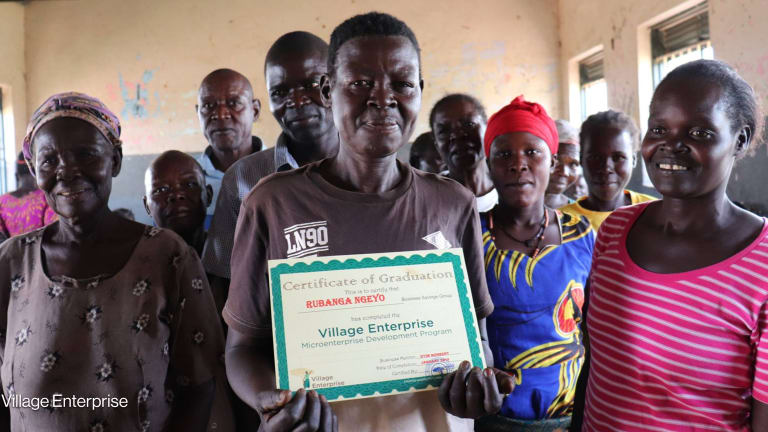
This spring I had the opportunity to speak to 170 participants around the world in an interactive webinar the USAID/IDEA Mobile Solutions team organized, called “Demystifying Electronic Payments: Lessons Learned from Pathfinder on Transitioning Away From Cash.” I’m excited about this, because I think it’s a great example of the next step we’re taking towards transforming our Agency.
Our Mobile Solutions at USAID team is young – we started two years ago with no budget and 1.5 people. What we set out to do is really a change-management program within our agency. We’re working to make mobile technology a core part of how we do our work, including transitioning our programs from cash to e-payments.
With colleagues at organizations like CGAP, the Gates Foundation, and Mercy Corps, we’ve done a lot of work to help people understand what mobile money is and why it’s worth working on. It has been such a rich experience because we’ve had both grassroots support as well as that of our leadership. There’s no way we could have gotten where we are without our CFO, General Council, procurement team, and especially our field staff.
While working with these incredible champions, we’ve received many requests for tools, resources, and trainings. As our team and our experience grow, we’re helping them move from supporting the idea of mobile money to the nitty gritty of implementation. A strong demand for real world examples was the inspiration for the webinar, almost a “Mobile Money 201” course. We wanted to take a deep look at how an organization that’s committed to going from cash to almost all electronic payments gets there.
We also really wanted to hear from the field, so we were lucky to have Mustafa Kudrati and Peter Mihayo of Pathfinder Tanzania speak to their lessons learned, challenges, and successes in transitioning from cash to electronic payments.
They answered questions such as: What are recommended standard operating procedures for payment disbursement and reconciliation? What are key considerations for others exploring the transition? Some of the things they shared really got me thinking about how all this works in the field, including:
Reducing cash payments: Pathfinder Tanzania went from making 30-50 percent of payments in cash to writing only 3-5 checks per month. This statistic is just stunning to me.
Increasing transparency and efficiency: Pathfinder could ensure that all funding for training participants went to registered accounts they could trace, making the program more transparent. This is a recurring theme we hear from our partners.
Reaching scale: Mustafa reminds me there was no way the program would have reached so many participants without transitioning to e-payments. Between June and December Pathfinder trained more than 4,000 people scattered throughout 40 districts. Without mobile money, they estimate it would have taken 18 months to do this. And now, they have a vision for serving even more people with these new payment tools.
That’s amazing, and that’s what we want to see – successful projects at USAID quickly scale approaches that they’ve seen enhance people’s lives. It’s a powerful story, and it shows that mobile payments change our work in a very fundamental way.
Explore related content:
Join Devex, the largest online community for international development, to network with peers, discover talent and forge new partnerships - it’s free! Then sign up for the Devex Impact newsletter to receive cutting-edge news and analysis every month on the intersection of business and development.








